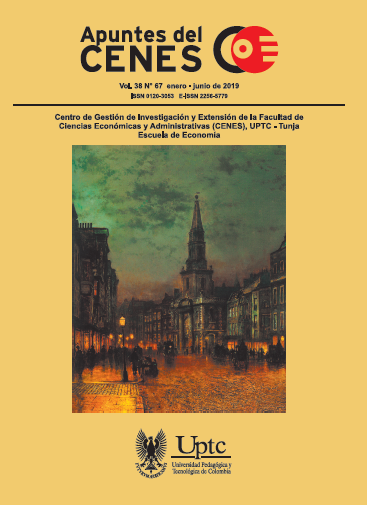China’s Dollar-linked Hong Kong during the Global Crisis

Abstract
This paper explores the domestic price level and trade competitiveness of Hong Kong in addition to the compatibility of this dollar-based currency board to the criteria inspired by the optimum currency area (OCA) theory. On price and competitiveness, findings point out that during the turmoil Hong Kong had not performed as well as that in the past and an apparent reason for this is the inflows of hot capital from abroad especially of the US that fuelled rising property prices. On conformity to the OCA criteria, the findings broadly corroborate the fixed exchange regime with the US as the monetary anchor country but at the same time China appears as a prospective contender to US as the monetary anchor. In the longer run, amidst the prolonged economic and monetary weaknesses in the US plus the emergence of renminbi as a global currency, Hong Kong might as well unify its exchange rate with the Chinese money.
Keywords
China, Hong Kong, U.S., Asia, currency, dollar, renminbi, money
References
Artis, M. & Zhang, W. (2002). Membership of EMU: A Fuzzy Clustering Analysis of Alternative Criteria. Journal of Economic Integration, 17(1), 54-79.
https://doi.org/10.11130/jei.2002.17.1.54
Baxter, M. & Stockman, A. (1989). Business Cycles and the Exchange-rate Regime. Journal of Monetary Economics, 27(1), 377-400.
https://doi.org/10.1016/0304-3932(89)90039-1
Bayoumi, T. & Eichengreen, B. (1997). Ever Closer to Heaven? An Optimum-Currency-Area Index for European Countries. European Economic Review, 41, 761-770.
https://doi.org/10.1016/S0014-2921(97)00035-4
Boreiko, D. (2003). EMU and Accession Countries: Fuzzy Cluster Analysis of Membership. International Journal of Finance and Economics, 8, 309-325.
https://doi.org/10.1002/ijfe.216
Chen, N. F. (2001). The Hong Kong Currency Board during the 1997-8 Crisis: Problems and Solutions. International Review of Finance, 2, 99-112.
https://doi.org/10.1111/1468-2443.00017_2_1-2
Devereux, M. B. (2003). A Tale of Two Currencies: The Asian Crisis and the Exchange Rate Regimes of Hong Kong and Singapore. Review of International Economics, 11, 38-54.
https://doi.org/10.1111/1467-9396.00367
Fleming, J. M. (1971). On Exchange Rate Unification. Economic Journal, 81, 467-88.
https://doi.org/10.2307/2229844
Fung, L. & Yu, I. (2010). Dislocations in the FX Swap and Money Markets in Hong Kong SAR during the Global Credit Crisis of 2007-08. BIS Papers 54. Basel, Switzerland: Bank for International Settlement.
https://doi.org/10.2139/ssrn.1525340
Funke, M. & Paetz, M. (2013). Housing Prices and the Business Cycle: An Empirical Application to Hong Kong. Journal of Housing Economics, 22(1), 62-76.
https://doi.org/10.1016/j.jhe.2012.11.001
Gerlach, S. (1988). World Business Cycles under Fixed and Flexible Exchange Rates, Journal of Money, Credit and Banking. 20, 621-632.
https://doi.org/10.2307/1992288
Gerlach-Kristen, P. (2009, June). Business Cycle and Inflation Synchronisation in Mainland. China and Hong Kong. International Review of Economics & Finance, 18(3), 404-418.
https://doi.org/10.1016/j.iref.2008.09.006
Goodstadt, L. F. (2010) The Global Crisis: Why Laisser-Faire Hong Kong Prefers Regulation HKIMR Working Paper No.01/2010. Hong Kong: Hong Kong Institute for Monetary Research
https://doi.org/10.2139/ssrn.1516253
Imai, H. (2010), Hong Kong's Inflation and Deflation under the Us Dollar Peg: The Balassa-Samuelson Effect or Export Price Shocks? The Developing Economies, 48, 319-344.
https://doi.org/10.1111/j.1746-1049.2010.00110.x
Kenen, P. (1969). A Theory of Optimum Currency Areas: An Eclectic View. In R. A. Mundell & A. K. Swoboda, (eds). Monetary Problems of the International Economy (pp. 41-60). Chicago: University of Chicago Press.
Krugman, P. (1990). Policy Problems of a Monetary Union. In P. De Grauwe & L. Papademos, (eds.), The European Monetary System in the 1990s. Harlow: Longman.
McKinnon, R. I. (1963). Optimum Currency Areas. American Economic Review, 53, 717-725.
McKinnon, R. I. (2010). Rehabilitating the Unloved Dollar Standard, SCID Working Paper. Stanford, CA: Stanford Institute for Economic Policy Research, Stanford University.
https://doi.org/10.1111/j.1467-8411.2010.01258.x
Mundell, R. (1961). A Theory of Optimum Currency Areas. American Economic Review, 51, 657-664.
Nguyen, T. (2007). East Asian Currency Area: A Fuzzy Clustering Analysis of Homogeneity, Development and Policies Research Centre Working Paper No. 10. Vietnam: DPRC.
Quah, C. H. (2014b). Revisiting Business Cycles in the Eurozone: A Fuzzy Clustering and Discriminant approach. Acta Oeconomica, 64(2), 161-180.
https://doi.org/10.1556/AOecon.64.2014.2.2
Quah, C. H. (2016a). Economic Feasibility of a BRICS Monetary Union. Global & Local Economic Review, 20(2), 1-29.
Quah, C. H. (2017). Exchange Rate Fixation between US, China, Japan and Eurozone. Margin: The Journal of Applied Economic Research, 11(2), 99-120.
https://doi.org/10.1177/0973801016689206
Quah, C. H. & Crowley, P. M. (2010). Monetary Integration in East Asia: A Hierarchical Clustering Approach. International Finance, 13(2), 283-309.
https://doi.org/10.1111/j.1468-2362.2010.01264.x
Quah, C. H. & Crowley, P. M. (2012a). Which Country Should Be the Monetary Anchor for East Asia: the US, Japan or China? Journal of the Asia Pacific Economy, 17(1), 94-112
https://doi.org/10.1080/13547860.2012.640004
Quah, C. H. & Crowley, P. M. (2012b). China and the Dollar: An Optimum Currency Area View. Prague Economic Papers, 4, 391-411.
https://doi.org/10.18267/j.pep.431
Ran, J., Voon, J. P. & Li, G. (2010), How Do Oil Price Shocks Affect A Small Non-Oil Producing Economy? Evidence from Hong Kong. Pacific Economic Review, 15, 263-280.
https://doi.org/10.1111/j.1468-0106.2010.00501.x
Tavlas, G. (1993). The "New" Theory of Optimum Currency Areas. The World Economy, 16, 663-685.
https://doi.org/10.1111/j.1467-9701.1993.tb00189.x
